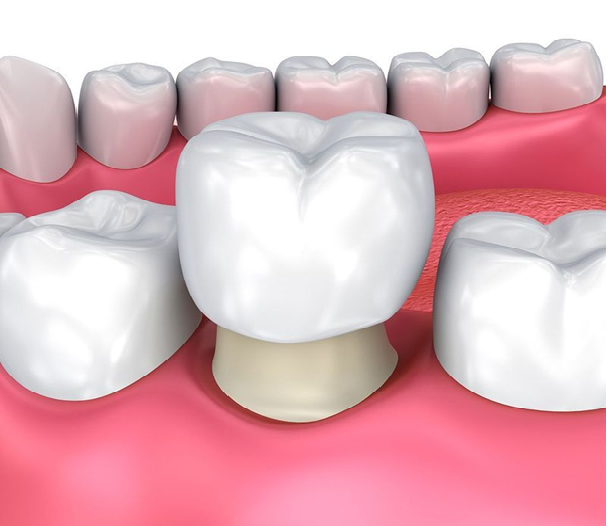As many of us know, when you have a missing tooth, it can be difficult to communicate, speak, bite or even eat effectively. When a tooth is missing, it is essential to visit your dentist to discuss the dental options for replacement.
Dental bridges are utilized in dentistry to replace the missing teeth and provide a bridge that connects the adjoining teeth. The teeth on either side of the missing tooth are called abutment teeth and the replacement tooth is called the pontic (false tooth).

Why are Bridges Important?
Dental bridges will help restore your smile and maintain the appropriate face shape. They can also help you properly chew food, speak and place the jaws together when biting, which helps prevent other teeth in the mouth from moving out of place or drifting apart.
Bridges and crowns are fixed prosthetic devices that are cemented onto existing teeth or implants, by a dentist or prosthodontist. Crowns are used most commonly to entirely cover or "cap" a damaged tooth or cover an implant. Your dentist may recommend a crown to:
Bridges and crowns are fixed prosthetic devices that are cemented onto existing teeth or implants by a dentist or prosthodontist. Crowns are used most commonly to entirely cover or "cap" a damaged tooth or cover an implant. Bridges are commonly used to cover a space if you’re missing one or more teeth. They are cemented to natural teeth or implants surrounding the space where the tooth once stood.
Benefits of BRIDGES & CROWNS
In addition to strengthening a damaged tooth, bridges and crowns can be used to improve a tooth’s appearance, shape, alignment and dental occlusion (bite). Gaps left by missing teeth can cause the remaining teeth to shift, which can result in a bad bite. Bridges and crowns help prevent this from happening.